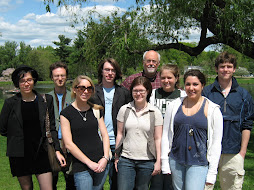The plan for the class is to examine environmental issues that occur locally in Eastern Connecticut and how journalism has been covering these issues and should in the future. The subject areas the course will examine include biodiversity, sustainable agriculture, water resources, recreation, air resources including climate change, and environmental justice. The course will also review how journalists relate and cover environmental science and scientists, government regulators, environmental risk issues and environmental advocates. As much as possible, students will get out of the classroom and into the environment. For instance, students will learn about biodiversity issues by taking a hike near Wolf Den, to where the last wolves in Connecticut were killed 200 years ago, and talk to a state wildlife biologist about wildlife issues. Students will learn about the issue of environmental justice and how undesirable environmental facilities are often located in poor or minority neighborhoods, by walking one of those areas in Hartford. Students will examine how the state regulates the environment by visiting with officials at the Connecticut Department of Environmental Protection.
The instructor has been covering environmental issues for most of his 35 years as a journalist. He was a reporter and editor for 28 years at the Providence Journal and for years he covered the environmental beat. He has been on the journalism faculty since 2002 and has just completed a journalism textbook, Covering the Environment, which helps students and professionals understand the environmental beat. He has continued to write freelance stories on the environment for major newspapers and magazines, including the New York Times, Smithsonian and E The Environment Magazine.
Tuesday, May 12, 2009
Subscribe to:
Post Comments (Atom)

No comments:
Post a Comment